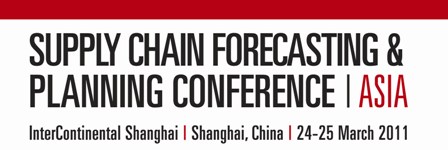On the supply-side, Sales & Operations Planning (S&OP) most commonly fails when an unconstrained plan meets real-world constraints. In this post, we would like to explore the nature of these constraints and suggest ways to moderate the operations plan in order to come up with a more predictable supply capability.
Process and Product Constraints
Supply constraints can be divided into two broad groups: material and process. The operations planning objective is to position product and capacity in the right place, in the right quantity and at the right time.
However, depending on the way the organization measures constraints in the operations plan, there are several problems that can occur. Materials are planned in units over fixed intervals, which are either weeks or months. This being said, is it also convenient to measure capacity in units such as the quantity of pieces, cartons or pallets that we can we supply over a given period of time? In a high-volume, low-mix business this is less of a problem since production lines and factories are rated for a fixed rate of output. On the other hand, a high mix business needs to share resources between products with different process and work content. Here in lies the problem with measuring capacity in units of production.
In the real world, process capacity is never effectively managed in terms of volume. The correct unit of measure for a process is time. Minutes of run- combined with setup-time add up to a process load. This is met with hours of shift-time capacity and days of lead-time. A constraints-based model will calculate these elements over dynamic periods of time.
The bias towards discrete units of measure stems from MRP. A material planning system performs production planning with an infinite capacity model. If the purpose is to constrain the operations plan, ignoring half of the constraints is clearly not going to work.
Enter Advanced Planning and Scheduling
If you want S&OP to blend well with process constraints, the answer is a finite capacity model. This begins with production capacity and extends over many more processes in the modern manufacturing business. Advanced Planning and Scheduling or APS systems offer this finite capability. However, I am not promoting the need to implement yet another software system. APS systems are often expensive, complex and bundled with extra supply chain add-ons that are not commonly used. It also seems to be driven towards process optimization. In the real-world, optimizing multiple factors can get mathematically complex very fast. Before we optimize the process, we should examine simple prediction.
Prediction of supply capability doesn’t require complicated algorithms. We can begin with a simple definition of process and drive it to a demand model.
Processes and Products in the Value Stream
Just as constraints are organized around material and process, so too is the definition of value. Starting with production, the product definition can be found in bills of material and the item master. Process definitions are most commonly found in the form of routings. There are many other critical processes to define, but there is much less representation in the enterprise master data of those processes as opposed to routings.
Here we get another glimpse of the bias towards materials. Companies tend to have more detail and accuracy in regards to BOMs than their process routings. Perhaps this is the reason why it is understandable that the more human side of the business is the one that has a less quantified definition. However, process innovation has become more important than just product design and features. As the world realigns to a service- and solution-led global economy, defining and standardizing the process will become increasingly important to having the competitive advantage.
We do not need to start with detailed procedures of customer service excellence, or face the challenge of building a data-driven sales force. Most of the added value in the supply chain still relates to the product in terms of Design, engineering and manufacturing. These are the first processes where we should add in our constraints-based model. Linking a schedule of process requirements to demand, we can build a prediction engine that can hold the supply requirements of the operations plan to real-world constraints based on actual resources.
Integrated Planning with Constraints
The process definition is usually tied to demand with a product item or family. In this way, the sales and production plan can generate a load and capacity requirement. This method defines the process requirement at the lowest level of granularity which in the ranges of S&OP is usually a day. As the production plan is constrained to finite scheduling, this planning interval goes all the way down to hours and minutes.
Time lost during changeovers is a critical component of calculating batch sizes, which in turn constrains the order policy and demand release cycle. A calculation of fixed to variable costs is central to all calculations for economic lot or order quantities. All too often, the run quantities and MOQs across raw, semi-finished and finished goods are set with approximations or standards that possibly could have been optimized long ago. These parameters are the primary factors when determining service level, cost and lead-times. I would suggest that you review them in a dynamic model and align with the demand profile.
Real world constraints can be modeled against the operations plan to improve the predictability and performance to-promise. My presentation at the upcoming IBF Supply Chain Forecasting and Planning Conference: Asia in Shanghai being held from March 24-25, 2011 will show some examples of this and provide techniques on building a constraints-based model. You can read more about production planning and scheduling and get resources for finite planning at Production-Scheduling.com
Kien Leong
Managing Partner
JCIT Asia Pacific
Hear Kien Speak at




